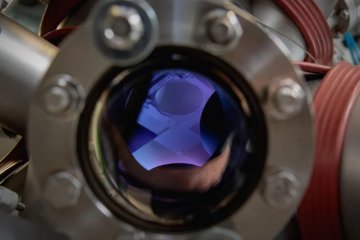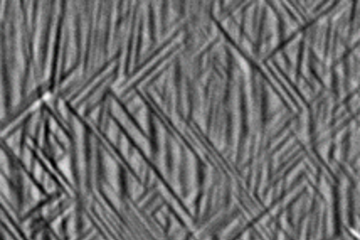All genres
41.
Journal Article
Nanomechanics of single crystalline tungsten nanowires. J. Nanomater. 2008, pp. 638947 - 638956 (2008)
42.
Journal Article
Single tungsten nanowires as pH sensitive electrodes. Electrochem. Comm. 10, pp. 1125 - 1128 (2008)
43.
Journal Article
A universal alternating immersion simulator for accelerated cyclic corrosion tests. Marerials and Corrosion 59 (2), pp. 175 - 180 (2008)
44.
Journal Article
Selective dealloying of NiTi by oxochloridation. Corr. Sci. 50, pp. 1368 - 1375 (2008)
45.
Journal Article
Reactivity imaging of a passive ferritic FeAlCr steel. J Appl Electrochem. 38, pp. 1339 - 1345 (2008)
46.
Journal Article
Combinatorial Electrochemistry on Al–Fe Alloys. Science and Technology of Advanced Materials 9, pp. 035009-1 - 035009-9 (2008)
47.
Journal Article
Nanostructured Columnlike Tungsten Oxide Film by Anodizing Al/W/Ti Layers on Si. Chem. Mater. 20, pp. 6482 - 6493 (2008)
48.
Journal Article
Electrodeposition of gold on tungsten nanowires present in nial-w eutectics. Journal of Electroanalytical Chemistry 618 (1-2), pp. 11 - 16 (2008)
49.
Journal Article
Potassium Sorbate Solutions as Copper Chemical Mechanical Planarization (CMP) Based Slurries. Electrochim. Acta 52, pp. 5150 - 5158 (2007)
50.
Journal Article
Copper Nanowires and Silver Micropore Arrays from the Electrochemical Treatment of a Directionally Solidified Silver-Copper Eutectic. Electrochim. Acta 53, pp. 324 - 329 (2007)
51.
Journal Article
Modification of trap distributions in anodic aluminum tunnel barriers. J. Electrochem. Soc. 154, pp. C558 - C561 (2007)
52.
Journal Article
Model systems with tuneable geometry and surface functionality for a quantitative investigation of the Lotus effect. Langmuir 23, pp. 2091 - 2094 (2007)
53.
Journal Article
Single particle impact experiments for studying particle induced flow corrosion. Corrosion Science 49, pp. 231 - 239 (2007)
54.
Journal Article
High Voltage Pulse Anodization of a NiTi Shape Memory Alloy. Journal of the Electrochemical Society 154 (6), pp. C294 - C298 (2007)
55.
Journal Article
Microelectrochemical lithography: A method for direct writing of surface oxides. Electrochim. Acta 52, pp. 7865 - 7869 (2007)
56.
Journal Article
Rotating disc electrode study of the electropolishing mechanism of NiTi in methanolic sulphuric acid. Electrochim. Acta 53, pp. 915 - 919 (2007)
57.
Journal Article
Yield stress monocrystalline rhenium nanowires. Applied Physics Letters 91, 111919 (3pp) (2007)
58.
Journal Article
Copper Repassivation Characteristics in Carbonate-Based Solutions. J. Electrochem. Soc. 153, pp. B337 - B343 (2006)
59.
Journal Article
Discrete electrochemical transients of aluminium alloys generated by slurry jet impingement. J. Phys. D: Appl. Phys. 39, pp. 3157 - 3164 (2006)
60.
Journal Article
Preparation of Ultramicroelectrode Array of Gold Hemispheres on Nanostructured NiAl-Re. J. Electrochem. Soc. 153 (1), pp. C33 - C36 (2006)











